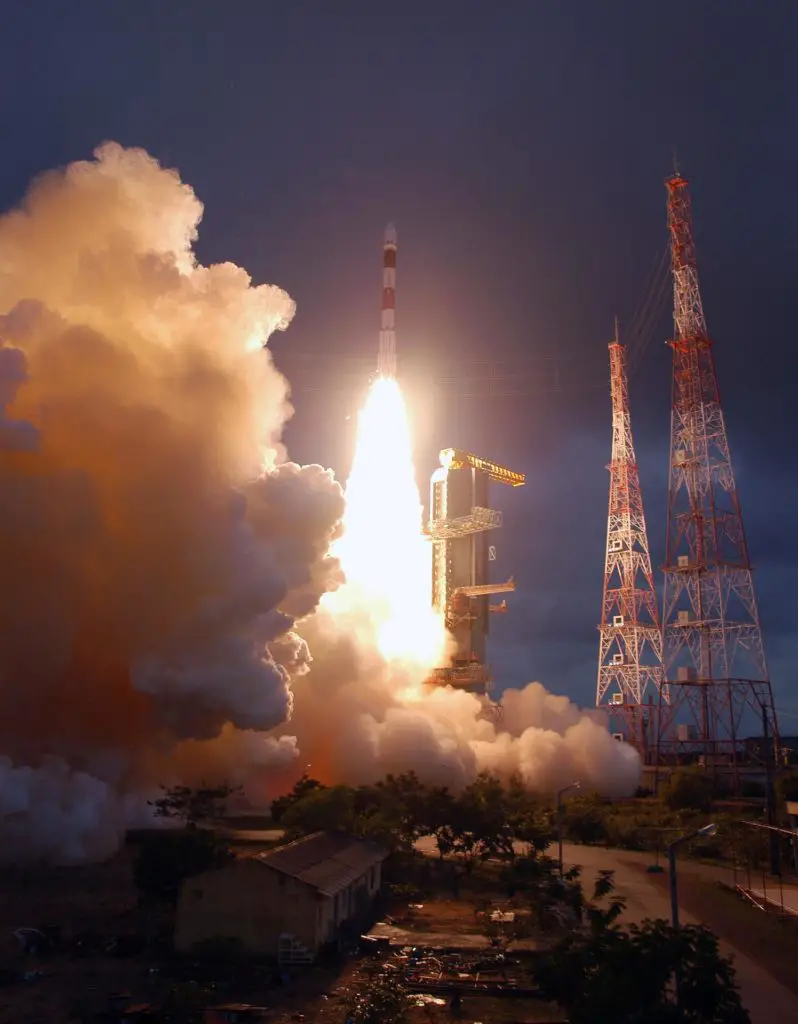The much awaited Chandrayaan-3 mission has finally been launched by India’s Indian Space Research Organization (ISRO), carrying with it an uncrewed lander and rover pair. This launch marks a significant step forward in space exploration. This ambitious project embodies the hopes of the world’s most populous nation and aspires to do what past lunar missions have not been successful in accomplishing, which is a successful landing in the region near the moon’s south pole.
During the first stage of the mission, the rocket went into orbit around the Earth, which established the groundwork for the subsequent journey to the moon. A series of firings of the spacecraft’s thrusters will gradually widen its egg-shaped trajectory around Earth over the course of the next month. This will allow the spacecraft’s speed to be increased in preparation for its last journey to an orbit around the moon.
The landing area for the mission, which measures four and a half kilometers by three and a half kilometers, is strategically situated close to the location where the Russian spacecraft Luna 25 is scheduled to touch down. Because of how near we are to the Russian outpost, there is potential for future scientific collaborations and joint discoveries.
Estimating the spacecraft’s speed in real time as it approaches the surface of the moon is one of the most difficult tasks that the scientists working for ISRO have to complete. They have devised a new algorithm that, when applied to speed calculations, will produce precise results in order to circumvent this obstacle. In addition, the lander’s legs have been beefed up with reinforcements to increase its durability during the landing process, particularly while landing at somewhat greater speeds.
After the lander, which goes by the name Vikram and successfully lands on the moon’s surface, it will release a rover with six wheels and the name Pragyan. In addition to conducting scientific studies of lunar soil and rocks using a cutting-edge spectrometer, the Pragyan rover will investigate the topography of the moon using cutting-edge cameras that are equipped with advanced obstacle avoidance technology. Pragyan is powered by its own modest solar array.
Vikram, on the other hand, is outfitted with a number of scientific instruments, such as a seismometer that can detect moonquakes, a thermometer-like instrument that can measure surface temperatures, a plasma probe that can study the environment of the moon, and a retroreflector that can assist with precise laser ranging measurements.
If India were to be able to successfully complete Chandrayaan-3, it would be a huge milestone for the country. It would demonstrate the country’s domestic technological capabilities and place India as a crucial partner in any future efforts to explore the moon. In addition, the objectives of the expedition go well beyond merely exploring the moon. Chandrayaan-3 will add to our understanding of our home planet and the dynamic environment it possesses by tracking even the most minute changes that occur on its surface.
The expansion of India’s space economy has been fueled, in part, by the country’s involvement in the Artemis Accords and the development of its national space strategy. The regulation makes it possible for private companies to carry out rocket launches, which encourages innovation and cooperation within the nation’s space sector. The Chandrayaan-3 spacecraft is illustrative of India’s dedication to using its space capabilities for the advancement of science and the growth of the economy.
In addition to this, Chandrayaan-3 will encourage international cooperation, as India and Japan intend to work together on the Lunar Polar Exploration mission that will be conducted by the spacecraft. This relationship will encourage the sharing of knowledge and create the door for joint scientific discoveries, which will be to the benefit of both countries and will advance our overall understanding of the moon.
The world’s attention is currently focused on India and its efforts to conduct lunar exploration as the Chandrayaan-3 mission continues to unfold. Not only will it go down in the annals of history if the lander and rover pair are able to successfully touch down on the moon’s south pole, but it will also consolidate India’s standing as a powerful competitor in the field of space exploration. The scientific information that is obtained during this mission will help to our knowledge of the moon’s geology, as well as our comprehension of our role in the universe and the potential resources that it may contain.
![]()
